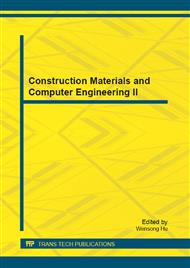p.65
p.69
p.77
p.85
p.91
p.97
p.101
p.107
p.115
Determination of Deformation Characteristics of C38ML Microalloyed Steel
Abstract:
Thanks to their properties, microalloyed steels have found numerous applications in virtually all branches of industry. Forging plants, which supply various forged parts for automotive industry, are under substantial pressure to cut costs and reduce production times. One of potential sources of savings is reducing the forging temperature. This step requires that the deformation behaviour of feedstock materials is mapped accurately. The C38ML material was chosen for the present experiment and tested in compression in a plastometer. Test temperatures ranged from 700 °C to 1100 °C at deformation rates between1 mm/s and 100 mm/s. Data from plastometer tests were converted into a model compatible with the DEFORM simulation software. The model was employed for optimising the forging process in terms of forming tool speeds. Another approach to finding this valuable information consists in using various simulation programmes. In the present experiment, measured deformation curves were compared with those obtained using the JMatPro software. Finally, reference forgings were made in a hydrostatic forging press in trials of the new manufacturing procedure and their properties were measured
Info:
Periodical:
Pages:
91-96
Citation:
Online since:
July 2013
Authors:
Keywords:
Price:
Сopyright:
© 2013 Trans Tech Publications Ltd. All Rights Reserved
Share:
Citation:


